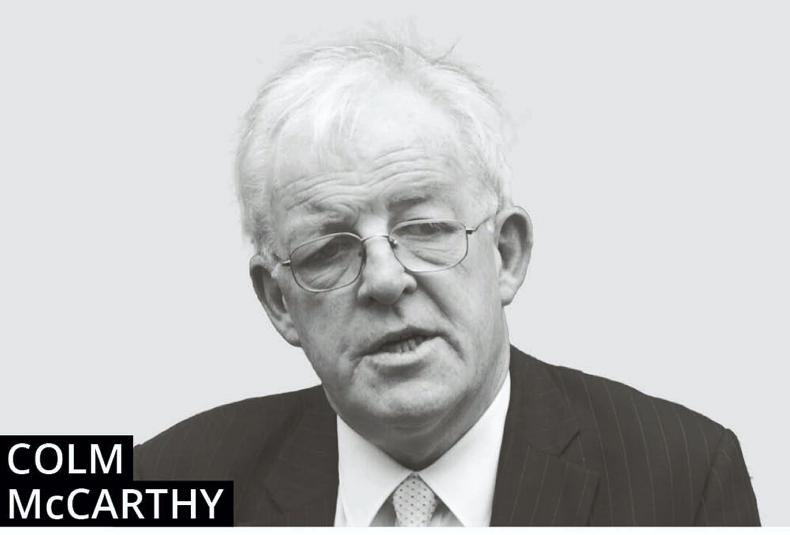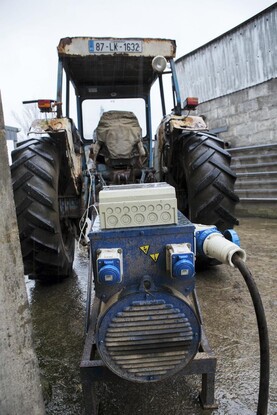Every European country faces heavy costs for decades ahead to upgrade the electricity system. A largely invisible overhead is the capital cost of generation, transmission and distribution, for which users are charged per unit. Renewable generation capacity has to be built and connected and there will be further costs for back-up gas generation and large-scale battery storage. Expanded transmission and distribution would absorb huge amounts of capital even if the capital costs of new generation were ignored.
Countries which have strong hydro resources often have some built-in storage in the reservoirs. This helps to explain the cost-effectiveness of windfarms, for example some parts of southern Scandinavia are well connected to the plentiful hydro systems further north. Ireland has already exploited whatever hydro opportunities were available, but constructed a pumped-storage station at Turlough Hill in Co Wicklow in the 1970s.
The station uses power when it is plentiful and cheap to fill an elevated reservoir which offers some ‘delayed’ capacity at peak demand. The motivation at the time was ‘peak-shaving’, essentially pumping at night in order to generate during the day. The station is modest in today’s circumstances, offering a buffer measured only in hours. The project was conceived for a far smaller system over 60 years ago in the late 1960s when there was no prospect of intermittent wind or solar generation.
The ESB may silently regret not having built some more ‘hydro-batteries’ in the intervening years when there were potential sites available. Aside from the impossibility of foreseeing the distant future, it is worth recalling that the Turlough Hill project faced environmental objections at the time, overcome at some cost to ESB and ultimately to the customer.
Since Ireland has chosen to sit out whatever technological developments may be coming in nuclear generation, the option of always-on nuclear stations has been declined, perhaps for decades, unless they are located in the United Kingdom, from which electricity imports have been rising.
When the decision was taken, and enshrined in 1999 legislation, the potential costs may not have been entirely evident, and were not a feature of the Dáil debate, led by the bill’s sponsor the energy Minister Eamon Ryan.
Ireland has a 32-county wholesale electricity market, the UK government is promoting nuclear again as an adjunct to renewables and the 1999 ban prohibits only the production, not the consumption, of nuclear power. Since the 1999 Act does not apply in Northern Ireland, the next fleet of nuclear stations in the UK could include one located in Ireland’s single electricity market.
The portion of the energy system using electricity has been rising. Transport systems and space heating in homes and workplaces are steadily converting to electrical energy, easier to decarbonise. The total demand for electricity has begun to increase sharply and targets enunciated by governments imply more of the same, with heavy capital costs in generation, transmission and distribution. Data centres aside, the heavy capital costs are unavoidable and they will be financed through higher charges to consumers or via Government subsidy, meaning higher taxes now or later. There is no other source of finance: energy companies would exhaust their reserves in short order if they tried to pick up the tab and would lose creditworthiness.
Electricity has always been a cost-recovery business, so more capital spending will eventually be reflected in customer bills. The amounts involved are very large – the national high-voltage transmission grid is already under pressure from intermittency and there have been objections to new transmission lines, including demands that lines be buried underground, out of sight but considerably more expensive.
Additional power needs new generation units and renewables, wind farms and solar arrays being the favoured options. With one notable exception, these cannot easily be located next to fossil fuel stations which are due to be phased out, so extra transmission capacity, meaning lines of pylons in rural areas, will be sought by Eirgrid.
These lines can be placed underground over shorter distances in cities but consider the twin lines, built in the 1980s through the midlands from Clare to the Dublin area, to off-take power from the Moneypoint coal-fired station. Moneypoint will close in the years to come, but these lines will continue to be valuable if new generation comes to be constructed in Clare or nearby. Locating a nuclear plant in Clare would avoid the cost of long-distance transmission.
There is instead a sizeable lobby for offshore wind development off the west coast, including for State subvention to numerous seaports and guaranteed prices to producers. Price guarantees cost nothing up front but produce contingent liabilities for the Exchequer and the temptation for politicians to ‘recover’ these costs in customer bills. Once incurred, they cannot be recovered and this is just an earmarked tax of unknown magnitude.
Season’s greetings and a bountiful 2025.






 This is a subscriber-only article
This is a subscriber-only article










SHARING OPTIONS: